Things to do in Corfu
Along with its wonderful beaches, magical coves and clear, warm sea, the lush green island of Corfu offers plenty of things to see and do, many of which have fascinating cultural or historical significance. Outdoor activities to enjoy include water sports, hiking in the mountainous interior, and there's even an 18-hole championship golf course for those fancying a quick round.
The beautiful leafy Corfu Town boasts some wonderful churches, fortresses and even a palace. History buffs will love the Archaeological Museum, which offers insight into Corfu's past, as well as the Museum of Asian Art, which houses some breathtaking pieces originating from China and Japan. The Municipal Gallery of Corfu showcases famous works such as the 'Sphinx' by Sp. Skarvelis, and 'The assassination of Capodistria' by Haralambos Pachis.
There are many smaller villages worth visiting in Corfu as well. The villa of Achilleion, just six miles (10km) south of Corfu town, has beautiful rolling gardens that provide the perfect location for famous statues by the German sculptor, Herter. The terraced cliff-top view point known as Kanoni, near the eastern port of Corcyra, is the ideal spot to take that postcard shot for the holiday album. Nymphes is a green village with a number of wells and waterfalls heavy with myth and legend.
There are plenty of things to do with children in Corfu, most notebly Aqualand Water Park, one of the largest water parks in Europe. Small children will enjoy the many sandy beaches including Sidari with its Kanal de l'Amour, the pretty bay of Kassiopi, the quiet Lefkimmi with its children's playground, and the unspoilt Chalikounas Beach. Most of the more popular beaches offer pedalos, windsurfing, boat trips and banana boat rides. Alternatively, tavellers can hire a small day boat and motor along the coast to find one of the many unspoilt coves.
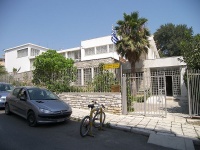
Corfu Archaeological Museum
Corfu Town has its own Archaeological Museum. Though small and ordinary-looking from the outside, it's definitely worth a visit for anyone interested in archaeology or the area's a…
Corfu Archaeological Museum
Corfu Town has its own Archaeological Museum. Though small and ordinary-looking from the outside, it's definitely worth a visit for anyone interested in archaeology or the area's ancient history. Built between 1962 and 1965, the museum was initially meant to house important artefacts from Corfu's sixth century BC Temple of Artemis. Indeed, its greatest treasure is the temple's Gorgon pediment, which is Greece's oldest surviving stone pediment. To many, it's a fine example of archaic sculpture. Visitors will find some other interesting sculptures, too, such as the Lion of Menecrates, which a famous Corinthian sculptor carved in the late 7th century BC. The 500 BC pediment of Dionysus is another fascinating artefact; the museum's collection also features some interesting coins, vases and armour.
Museum of Asian Art
Although it may seem strange to visit a museum dedicated to Eastern art and antiquity while on holiday in Greece, this museum is very interesting and the only one of its kind in th…
Museum of Asian Art
Although it may seem strange to visit a museum dedicated to Eastern art and antiquity while on holiday in Greece, this museum is very interesting and the only one of its kind in the country. Gregorios Manos, the founder of the museum, was a Greek ambassador to Austria who was passionate about the East. He purchased about 9,500 authentic Chinese, Korean and Japanese artefacts at auctions, and they formed the basis of the museum collection when it was opened in 1928. The permanent collection includes arms and armour, bronzes, ceramics, paintings, sculptures and textiles from China, Japan, Korea, India and a few other Asian countries. The three-storey building housing this collection of art is a beautiful neoclassical structure built by the British in 1820, when the Ionian Islands were ruled by Britain. The building itself justifies visiting the museum for those with an interest in architecture. The museum is a peaceful oasis that immerses the visitor in another world and culture. It's situated at the north end of the Esplanade in Corfu Town.
Website www.matk.gr
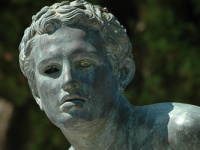
Achilleion
Empress Elizabeth of Austria built the Achilleion in 1890. Standing just south of Corfu, the palace was intended as a memorial to her son, Rudolf, following his death by apparent s…
Achilleion
Empress Elizabeth of Austria built the Achilleion in 1890. Standing just south of Corfu, the palace was intended as a memorial to her son, Rudolf, following his death by apparent suicide one year earlier. Neoclassical in style, the palace takes the mythical figure, Achilles, as its central theme, and features numerous statues and motifs associated with him. The gardens are also set with a number of statues commissioned by the Empress, including German sculptor, Herter's, 'Dying Achilles'.
After Elisabeth's assassination, the German Kaiser Wilhelm II purchased the Achilleion property and used it as a summer home. During his time, the palace hosted many notable guests and became a hub of European diplomacy. The Kaiser added some artwork of his own. The palace transitioned to a new purpose when it served as a military hospital during World War One, and as a military headquarters in World War Two. Later, a brief spell under private ownership saw it house a casino in the upper storey.
It has since been reclaimed as a museum, and as a venue for state events. The Achilleion houses many valuable artworks and is well worth a visit. Its sprawling gardens are also a joy to explore.
Website www.achillion-corfu.gr/?lang=en
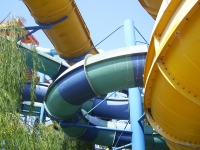
Aqualand Water Park
Aqualand Water Park is the perfect place to cool off while holidaying on Corfu. With its wide variety of slides, rides and pools, it's understandably one of the island's most popul…
Aqualand Water Park
Aqualand Water Park is the perfect place to cool off while holidaying on Corfu. With its wide variety of slides, rides and pools, it's understandably one of the island's most popular attractions for kids and adults alike. Children aged four to eight can enjoy water games, slides, jumping castles, playgrounds and more in a fun-filled kid's area. Thrill seekers will find steep, scary slides. Visitors looking to relax should head for Jacuzzis, gentle pools, the Lazy River and sun loungers. Parking, sunbeds, umbrellas, as well as access to shower facilities and changing areas are all free; dining options include a bar, a restaurant and various fast-food kiosks. Visitors should pack plenty of sunscreen as the park is very much exposed to the glorious Greek sun.
Website www.aqualand-corfu.com
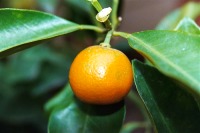
Nymphes
Nymphes is a big village with a unique and colourful history. Legend has it that the mythical nymphs would come to bathe in the village's waterfalls, giving lucky humans a chance t…
Nymphes
Nymphes is a big village with a unique and colourful history. Legend has it that the mythical nymphs would come to bathe in the village's waterfalls, giving lucky humans a chance to catch a glimpse. Nymphs were nature spirits in Greek mythology and were usually portrayed as beautiful, female guardians of nature. There were different kinds and the ones at Nymphes would have been Naiads, guardians of springs and rivers. Nowadays travellers can still walk to and enjoy the scenic waterfalls and wells in this lush setting; it's easy to imagine the nymphs in this magical landscape.
Other attractions in Nymphes include the nearby monastery of Askitario, where, according to local tradition, the monk Artemios Paissios lived in the 5th century and worked many miracles. The Agriculture Co-operative is also interesting and produces fruit, as well as liqueurs and sweets made mostly from the kum-kuat fruit. They will allow visitors to sample their wares free of charge and, if visitors find something they like, they can buy it. These local treats make for good souvenirs. Other lovely villages to visit on Corfu include Kynopiastes, Lakones and Roda.
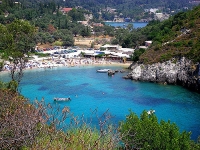
Paleokastritsa
Paleokastritsa is one of the most beautiful villages on the beautiful Corfu and it's frequently included in tours of the island. This resort area is on the west coast of Corfu isla…
Paleokastritsa
Paleokastritsa is one of the most beautiful villages on the beautiful Corfu and it's frequently included in tours of the island. This resort area is on the west coast of Corfu island about 16 miles (26km) from Corfu Town and consists of six lovely coves with sandy beaches, surrounded by green forests and olive trees. There's a variety of accommodation here for those who choose to stay.
The local tavernas, clustered around the waterfront, are renowned for serving up the town's delicious lobster catches, and there are a few bars and clubs that provide after hours entertainment. Visitors will find a monastery, dating from 1228, on the promontory about a mile from the beach with a surprisingly nice selection of gifts and handcrafted souvenirs. In one of the cells of the monastery a small museum has been founded that exhibits holy relics.
The monastery complex and the hills above provide magnificent views, particularly from the village of Lakones. A medieval castle, Angelokastro, overlooks the area from a hilltop that can be reached by a very scenic drive via the village of Lakones, or on foot, though the walk is arduous. There are several nearby villages worth visiting, and Paleokastritsa is a good base from which to explore Corfu.



